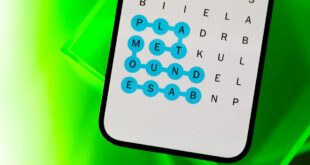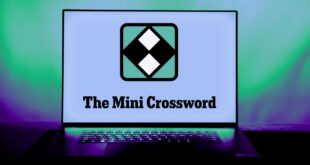The first thing I did when I got Amazon’s new Kindle Paperwhite (2024) was to fire up my previous generation Kindle Paperwhite (2021) and try to determine how much better the new version is. While it’s been three years since the Paperwhite was last updated, E Ink e-readers just don’t change that much from generation to generation — the technology has plateaued to a certain degree — so the upgrades tend to be pretty modest. That holds true for the Paperwhite (2024), but at least the improvements are fairly easy to discern.
Read more: Best e-readers of 2024

Pros
- Slightly larger 7-inch screen
- Improved performance with 25% faster page turns
- Slightly higher contrast
- Waterproof
Cons
- No dedicated page-turn buttons
- A little more expensive than the previous model
- Costs $20 to remove the ads

Pros
- Slightly larger 7-inch screen
- Improved performance with 25% faster page turns
- Slightly higher contrast
- Waterproof
- Wireless charging
- Auto-adjusting front-light sensor
Cons
- No dedicated page-turn buttons
- Somewhat pricey
For starters, the screen is slightly bigger — you get a 7-inch diagonal E Ink Carta 1300 e-paper display with a resolution of 1,264×1,680 (300 ppi) instead of the 6.8-inch 300 ppi display found in the previous model. Amazon says that display incorporates a new oxide thin-film transistor, which gives it the highest contrast ratio of any Kindle to date and makes text and images pop a bit more.
Also, the device itself, though it weighs a touch more than the previous Kindle (211 grams vs. 205g), is a tad thinner and has 25% faster page turns, according to Amazon. Word is the new Paperwhite is powered by a Mediatek dual-core 1GHz processor, while the previous model used a single core 1GHz process. Touted as the fastest Kindle to date, the Paperwhite (2024) does feel zippier overall when scrolling and navigating. You can sense the difference, though E Ink displays remain inherently more sluggish than LCD technology.
The Paperwhite (2021) on left, Paperwhite (2024) on right. The new Paperwhite’s 7-inch screen is slightly larger.
Fans of the now-discontinued Kindle Oasis, Amazon’s former high-end Kindle, may gripe that the new Paperwhite doesn’t have the physical page-turn buttons of that model (some people do love that feature). Also, Amazon still has the power button at the bottom of the device. A lot of people, myself included, would prefer it if it was at the top.
Note that the Paperwhite (2024) also comes in a Signature Edition, which offers 32GB of storage instead of 16GB, wireless charging and an auto-adjusting front light for $200. The Signature Edition is ad-free, while the standard version shows ads on the lock screen unless you pay $20 extra to opt out of them. Both the standard Paperwhite and Signature Edition come in metallic raspberry, metallic jade and metallic black colors and are fully waterproof (IPX8). They’re rated for up to 12 weeks of battery life based on moderate use.
I’m not sure if any of these improvements are quite significant enough to make you want to ditch your Paperwhite (2021), especially since the new Paperwhite costs $160 (£160) or $10 more than the previous Paperwhite base model. But if I had a Kindle that was several years old, as many people do, I’d certainly be tempted to make the jump to this new model.
Slightly faster performance and higher contrast
When Amazon says the new Paperwhite has 25% faster page turns and 20% better overall performance, that seems pretty substantial. But when you look at the old and new models side by side and A/B test them with the same content, the gains for the new model are relatively small. You tap the screen on each device to turn a page, and you’re looking at a fraction of second faster reaction time on the new Kindle. It doesn’t really change the reading experience. As I said, the device seems zippier overall, and that extra screen real estate that you get with a 7-inch screen (vs. the earlier model’s 6.8-inch screen) can add a couple of lines of text to a page, depending on the font size you use (you can now pinch and zoom on some text you’re reading to quickly access the font menu, which is nice).
The contrast improvement makes text appear a tad sharper, with the e-ink appearing slightly blacker, though not truly inky black. It’s a subtle difference, but the slightly improved contrast does make everything look slightly better.
It’s hard to see the difference in contrast in this photo but the Paperwhite 2024’s (on right) text pops slightly more. The larger screen also adds to lines of text to the page using the same font size on both devices.
Amazon has also changed the lighting scheme. The front-light system now has 19 LEDs, 10 white and nine amber (that’s up from 17 LEDs in the previous Paperwhite). When I matched the lighting settings on the Paperwhite (2021) and Paperwhite (2024), setting each at top brightness and a color temperature of 5, they looked different, so you can see the lighting scheme has changed. The new Paperwhite’s light is less blue at its coolest temperature setting.
The front light’s max brightness is now the same for all the new Kindle models (94 nits), including the smaller “refreshed” entry-level Kindle ($110) and Kindle Colorsoft ($280), Amazon’s first E Ink color reader, and the $400 tablet-size Kindle Scribe (2nd Gen), which ships in December 2024.
Kindle Paperwhite (2024) vs. entry-level Kindle (2024)
The new Kindle Paperwhite (left) next to the smaller entry-level Kindle (right) in its new matcha color (it also comes in black).
Aside from the larger screen and more advanced lighting scheme than the entry-level Kindle, the Paperwhite is fully waterproof while the entry-level Kindle isn’t (it doesn’t have a flush-front design for its screen, a requirement for waterproofing). The entry-level Kindle has two main upgrades: slightly faster performance and that aforementioned front-light max brightness that now matches the Paperwhite’s max brightness. The entry-level Kindle’s lighting system doesn’t allow you to adjust the color temperature of the light, but that’s not a huge deal.
Many people prefer e-readers with bigger screens, but I like the entry-level Kindle’s more compact size (it can fit in a coat pocket). Ever since Amazon improved the sharpness of its screen with a 300 ppi display and added a built-in light in 2022, it’s sort of become a Paperwhite mini (minus a few features) that costs significantly less than the real Paperwhite.
At $110 (£95, AU$199), the new entry-level model, which has 16GB of storage, costs $10 more than the previous-generation Kindle. The price is creeping up a bit, but it’s still the most affordable Kindle, and we should see it dip to $90 or so during flash sales.
Kindle Paperwhite (2024) vs. Kindle Colorsoft
The Colorsoft and new Paperwhite share the same chassis and weigh pretty close to the same amount — the Signature Edition Paperwhite is 215 grams while the Signature Edition Colorsoft is 219 grams. And they’re both fully waterproof with an IPX8 rating, which means they can be fully submerged and survive.
They also both have 7-inch screens. While the Paperwhite has a 300 ppi monochrome display, the Colorsoft is equipped with an E Ink Kaledio color filter, which is built into a customized display stack, according to Amazon. The new Paperwhite also has a customized display stack, but it’s optimized for black-and-white viewing and has slightly better performance for black and white. (The Colorsoft displays color content in 150 ppi).
The Colorsoft’s color display is a nice plus, though the Paperwhite 2024’s black-and-white performance is a touch better.
Amazon talks about how the Colorsoft and new Paperweight each have a smaller bezel around the screen than the previous Paperwhite. It also says the Paperwhite (2024) and Colorsoft are slightly slimmer devices. That’s true, but it’s not like Amazon took the previous Kindle chassis and slimmed it down and made the bezels smaller around the entire screen to accommodate a 7-inch display (compared to the 6.8 inch display on the 2021 Paperwhite).
The bezel on the new Paperwhite and new Colorsoft has only been cut down on the bottom. The sides and top have the same size frame surrounding the screen, and the dimensions of the new devices are actually slightly larger, so neither of them fits in my old case for the Paperwhite (2021).
It’s safe to say that the new, improved Kindle Paperwhite or entry-level Kindle are better options for most folks. But if you’re a Kindle aficionado and want something truly different from previous 7-inch Kindles, the Colorsoft is the one to get. I preferred it over the Paperwhite, even though the Paperwhite’s black-and-white performance is a touch better.
Kindle Paperwhite (2024) extra features and e-book ecosystem
As noted, the Paperwhite (2024) Signature Edition adds wireless charging and that auto-adjusting light sensor that dynamically adjusts the front light settings based on your environment. Beyond that, the Paperweight (2024) has the same minimal extras as the previous model, including Bluetooth connectivity (it’s Bluetooth 5.1) for listening to Audible audio books with Bluetooth headphones or speaker. You can also use Bluetooth audio for the VoiceView screen reader, which “provides spoken feedback allowing you to navigate your device and read books with text-to-speech.” That feature is available in English only.
While the web browser is still very limited, it has improved and it will load simple websites and blogs fine (any sites that are more graphic intensive are a problem). Dedicated e-readers are supposed to have limited feature sets so you remain focused on reading e-books and the web browser was mainly there so you can log into public Wi-Fi that requires some verification via a web browser. But it’s nice to see that the built-in browser seems a bit more functional.
The web browser is fine for viewing simple websites.
You can still side load content onto the Paperwhite. I tend to use the Send To Kindle feature, but there are additional ways to do it, though you’ll need to find the right drivers and file conversion software. The Paperwhite (2024) supports a variety of file formats natively, including Kindle Format 8 (AZW3), Kindle (AZW), TXT, PDF, unprotected MOBI and PRC. Formats including DOCX, DOC, HTML, EPUB, TXT, RTF, JPEG, GIF, PNG and BMP are supported through conversion.
Most people will simply tap into Amazon’s e-book ecosystem, which is the most extensive one out there and Amazon Prime members can find a fair amount of content that’s included “free” with their membership. You could also choose to subscribe to Amazon’s Kindle Unlimited service — think of it as Netflix for e-books — for $11.95 a month. A 3-month free trial is included with new Kindle devices.
Kindle Paperwhite (2024) final thoughts
Every time a new Kindle Paperwhite comes out, I sort of feel the same way about it. While I’m slightly disappointed that E Ink e-reader technology just hasn’t advanced that much, I’m happy to see the modest upgrades, and I do think those upgrades are easily discernible on the Paperwhite (2024).
As I said earlier, I’m not sure if any of these improvements are quite significant enough to make you want to ditch your Paperwhite (2021). But if I had a Kindle that was a few generations old, I’d be tempted to make the jump to this new model, especially when the price drops to $130 or so during flash sales. It’s certainly the best compact monochrome Kindle to date.
 synnbiob
synnbiob

